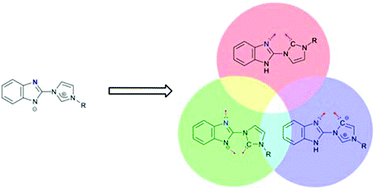Be sure to read our Editor’s Choice articles as chosen by Associate Editors Prof. Penny Brothers & Prof. Manfred Scheer!
Both articles are free-to-access until 4th October and can be found alongside our previously chosen articles in our online Editor’s Choice web-collection!
“NO sorption, in-crystal nitrite and nitrate production with arylamine oxidation in gas–solid single crystal to single crystal reactions” by et al., as chosen by Penny Brothers:
This year marks 100 years since Alfred Werner’s death in 1919, and it is over a century since he won the 2013 Nobel prize for developing the conceptual framework that we now understand as coordination chemistry. Studies on cobalt complexes formed the cornerstone of Werner’s work, and this paper shows they are still relevant and important well into the 21st century, although with some surprising twists. Single crystals of tetranuclear Co(II) and Co(III) complexes chemisorb nitric oxide (NO) which, after exposure to O2 physisorbed from air, is transformed to nitrite, nitrate and an aryl nitro group in remarkable single crystal to single crystal reactions. The medical and biological significance of NO and the solventless redox chemistry all occurring in the crystalline phase suggest exciting possibilities for its highly selective capture and conversion.
“Imidazolium-benzimidazolates as convenient sources of donor-functionalised normal and abnormal N-heterocyclic carbenes” by et al., as chosen by Manfred Scheer:
Mesomeric betaines are related to N-heterocyclic carbenes because of their interconversion by tautomerisation and therefore can act as “instant carbenes”. The authors established now imidazolium-benzimidazolates as a new and highly versatile “instant carbene” system. Depending on the steric demand of the imidazole N-substituent, normal but also abnormal NHC carbene coordination is observed. Thus, unstable but nevertheless highly interesting species are available starting from stable betainic precursors. Therefore, this paper contributes substantially to the chemistry of normal and abnormal N-heterocyclic carbenes.
Find our full Editor’s Choice collection online!
Keep up-to-date with our latest journal news on Twitter @ChemCommun or via our blog!
Learn more about ChemComm online! Submit your latest high impact research here!














